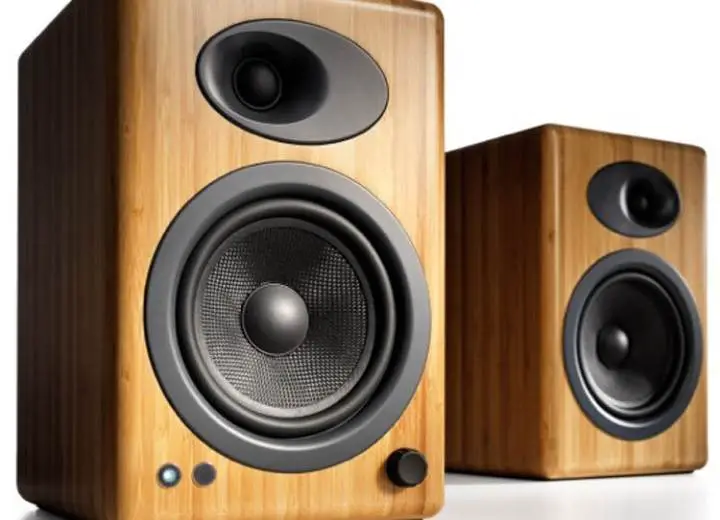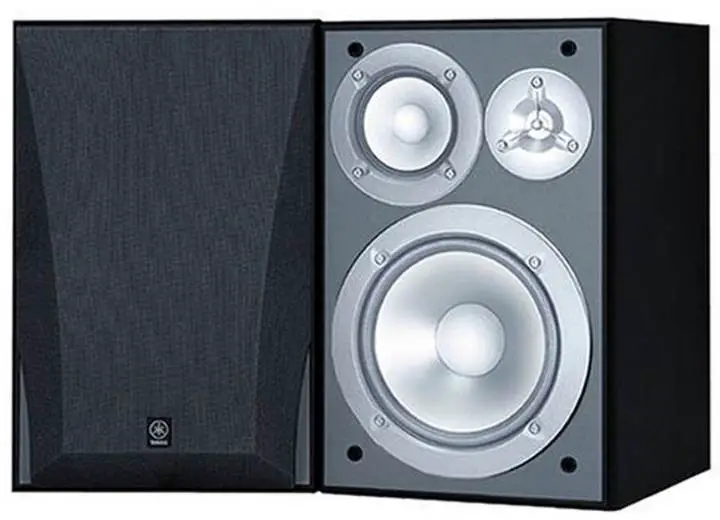
If you choose 2-way speakers, you may expect a well-balanced sound. The speaker does not generate excessive bass. Furthermore, 2-way speakers are considerably simpler to set up. They simply come with a few cords that need to be connected.
3-way speakers tend to focus on low frequencies. Furthermore, 3-way speakers provide greater customizing options.
3-way speakers can be significantly more expensive than 2-way speakers due to the extra drivers.
What is a 2-way speaker for karaoke?
There are two drivers in a 2-way speaker system. Each driver creates more sound around a certain frequency due to constraints imposed by the materials used to manufacture the drivers.

The conical vibrating component of a speaker that creates the sound you hear is a motorist.
The acoustic range of our hearing is from 20 Hz to 20,000 Hz. Engineers may properly mimic the range by using various materials and driver sizes.
You have the tweeter and woofer in a 2-way speaker system. The tweeter reproduces frequencies above 2,000 Hz. Meanwhile, the woofer is responsible for the other frequencies below 2,000 Hz.
What is a 3-way speaker for karaoke?
A 3-way speaker features three drivers to output the sound. Three speaker drivers are present in a three-way speaker system to output sound. Instead of splitting the audio into two groups like the way a 2-way speaker does, the audio here comes with three ranges.

The woofer’s frequency range is typically 200 Hz and lower. This is the audible sound’s bass range. The next sector is the mid-range, which ranges from 200 Hz to around 2,000 Hz. The tweeter is the final range.
A component system contains three different packs for the drivers, whereas a speaker system uses all the drivers in a single speaker box.
Comparison: 2-Way vs 3-Way Speakers for Karaoke
The appearance can help distinguish these speakers. Besides, there are some differences in their features as follows:
Coaxials
In a basic two-way coaxial speaker, there will be a large woofer and a small tweeter inside the box. There may be a woofer and a pair of little tweeters too. This configuration is common in coaxial systems, having the tweeter and woofer in the same unit.
In most cases, a 3-way triaxial system includes an extra component known as a mid-range driver.
The problem with this system is that it uses a passive transition within the box and works best when separated into two frequencies: shallow frequency and high frequency. The transition does not operate well when a mid-range works with the mix.
As a result, in terms of coaxials, using a 2-way speaker can produce better sound.
Frequency Output
Woofers in 2-way speakers have lower acoustic frequencies, ranging between 20 Hz and 2 kHz. Tweeters generate greater sound frequencies, ranging from 2 to 20 kHz.
A 3-way speaker delivers the same karaoke sound diversity as the 2-way speaker does. Both speakers can counteract the frequency inclination by generating sounds that are nice to our ears.
In some circumstances, a 3-way speaker utilizes a super tweeter to extend a greater frequency and give more detailed sound.
Contrast
A 2-way speaker for karaoke features two drivers. The woofer is in charge of the lower and mid-frequency regions. The tweeter, on the other hand, offers higher frequencies. These two frequencies can sometimes overlap and cause distortion.
A 3-way speaker, on the other hand, features three drivers. As a result, the frequencies might spread evenly. Three speakers indicate that each speaker has the potential to perform better than the others. However, the speakers entail a lot more frequency crossovers, which might lead to more distortion.
Both speakers have crossover filters that imply what frequency range they should generate. The technique to form the crossover determines the sounds you can hear and when there will be distortion.
Pros and Cons of 2-way and 3-way speakers
Each speaker has its own outstanding characteristics. You can watch this video to have better hearing and visual explanation.
Before choosing which speaker to use, you need to consider all of their benefits and drawbacks.
2-way speakers
Let’s get started with the 2-way tool. Due to the simple filtering procedure, a 2-way speaker offers an advantage. The crossover frequency, on the other hand, might be problematic. Electronic components might disrupt the sound.
Let’s have a closer look at their pros and cons:
Pros:
- When compared to their competitors, 2-way speakers are more cost-effective. They need fewer parts to work. They also necessitate a simplified crossover circuit since there are only two ranges for the crossover circuit.
- 2-way speakers produce a silent crossover. The circuit splits the input into several frequencies but does not amplify it.
- 2-way speakers are ideal for a coaxial system.
Cons:
- In a 2-way setup, the mid-range and bass sound creation occurs on the woofer. As a result, audio comes at a poorer rate by 2-way systems than the 3-way.
- Most 2-way systems filter away the high tweeter pitches and lower bass frequencies to recreate more appropriate sounds. Hence, the bass may be forfeit.
3-way speakers
Some people consider 3-way speakers as better equipment. However, the equipment requires some other parts to maximize its function.
The pros and cons can make things clearers:
Pros:
- A 3-way speaker system should be able to produce sounds better than its competitor. This idea is right if both speaker drivers come from the same high-quality materials.
- 3-way speakers have a better degree of clarity since they divide the noise into three parts.
- The bass frequencies reproduced by excellent 3-way speakers are higher than those generated by 2-way speakers. Their woofers deal with a lower frequency range, whereas the mid-range driver is in charge of the mid-selection.
- The bass from 3-way is an important component of karaoke sound because it adds depth, power, and rhythm to the mix.
Cons:
- 3-way speakers are generally more expensive than the 2-way. The extra things for their mid-range driver, as well as the enhanced transition circuit, are the main factors.
- In contrast to a 2-way system with any low-quality transition, 3-way speakers require a high-quality tool to be useful.
- The loudspeaker configurations are not ideal for these speakers.
3-way or 2-way speakers: What to choose?
It seems reasonable that choosing 3-way speakers rather than 2-way speakers would result in greater sound reproduction. However, the operation and performance of the speakers also depend on some factors.
You should consider the following:
- What is the quality of the crossover installation?
- What is the level of quality of the parts present?
- What is the enclosure’s design?
- How can the speakers place in relation to one another?
There have been situations when a high-quality 2-way device surpassed a substandard 3-way one entirely. You also need to think about the application you’ll be utilizing them on.
You should also look at speakers made by a business that sells its own drivers.
It’s critical to make sure the drivers precisely match a specific frequency range. However, it’s not uncommon to come across brands that collaborate closely with driver makers in order to improve accuracy.
Conclusion
We have compared 2-way vs 3-way speakers for karaoke.
3-way speakers are advisable if you appreciate the karaoke sound quality. On the other hand, when it comes to budget-saving and coax alternative options, a 2-way speaker can be more effective.
The best choice is the one that serves your needs better. After reading the article, you must have the answer for yourself. Hopefully, the speaker you choose can help you enhance your karaoke sound performance.
If you need any further information, please feel free to ask.
Thank you for following this post!
